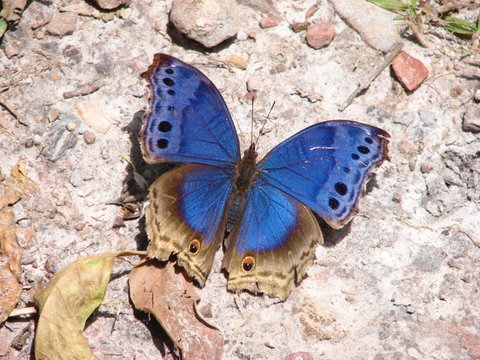|
This study was designed to
identify the butterfly species inhabiting the Bwindi Impenetrable
Forest, South West Uganda, assessing their habitat preferences as well
as determining their relative abundance and seasonal patterns.
Relative population
estimates, diversity and distribution were assessed by use of line
transects in five major habitat types ranging from 1400m at Ishasha Gorge (lowland forest)
to 2600m at the Bamboo zone (montane bamboo forest). Baited traps and
sweep nets were used.

In total, 183 butterfly
species belonging to 61 genera and nine families were recorded. 62
species were new to the Forest's butterfly list.
The study registered eight
regional endemic species and eight eclectic (not necessarily forest
dependent) species.
Photo:
Blue temora, a
characteristic species for lowland and mid altitude forest (Salamis
temora, Fam. Nymphalidae)
Species diversity decreased
with altitude, but some species occurred at all altitudes. Most
butterflies showed habitat preferences. Butterflies of Bwindi
Impenetrable Forest were divided into 'indicator species' and
'characteristic species', in terms of their habitat preference:
indicator species were those found exclusively within a vegetation
formation while characteristic species were those commonly found within
the formation but not confined to it. Some, however, were generalist
and/or adapted to various habitat types. Butterflies exhibited seasonal
changes in species composition and abundance.
Based on three well studied
butterfly genera: Swallow tails Papilio, Sword tails Graphium
and Charaxes, butterfly diversity in Bwindi Impenetrable
Forest was found to be higher than that of other forests in Uganda. |


